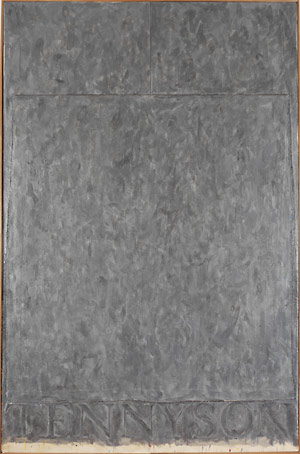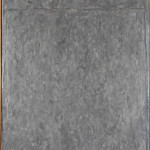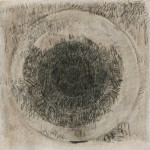By STEVE AISHMAN
Did you know that modern art has actually been used to torture prisoners? (said the guy standing next to me at the Jasper Johns' exhibit).
Whatever, if you don't like the painting, just don't look at it (I replied).
No, really. Just Google modern art is torture and you'll see. During the Spanish Civil War, the Republicans used modern art as a basis to build torture cells. The rooms were designed so that the prisoners could not sit or lay down. They had to stand at attention and stare at a wall that either had modern art designs like Kandinsky or an endless loop of the eyeball-slicing scene from Luis Bu–uel's 1929 film Un Chien Andalou. Modern art is torture, and that's why I like it.
Why would I want to look at something that is literally torture?
Well that's what modern art is. When viewing traditional artwork, the viewer is supposed to judge the art according to how much direct pleasure the aesthetics cause. For modern art, the work is supposed to cause pain. So much pain, in fact, that the work becomes sublime. It causes pleasure/pain. Modern art succeeds at causing pleasure precisely at its point of failure. Lots of people write about this stuff; Plato, Kant, Danto... look it up.
So what do you think of Jasper Johns?
Well, the problem with Johns is that the work no longer causes pain because people's tastes have changed. Now, the work is just considered beautiful, in a traditional sense. That's why it's being shown at the Met. Just listen to how people are talking about the exhibit:
"Gray in all its shades resists contextualization and emotion. It's an honest color..." Sara Rose for Boston.com;
"'Gray' is a powerful show because it allows you to see just how visceral, voluptuous, and vulnerable (Johns) has been all along." Jerry Saltz for New York Magazine;
"But by bringing together so many dark-toned works, this exhibition allows us to see something that I, for one, had not quite realized about Johns's early paintingsÑthat words like "melancholy" and "indifference" don't begin to describe their utter emotional desolation." Richard Dorment for the New York Review of Books;
Compare Jerry Saltz talking about the work for New York Magazine to James Kalm's unauthorized video
.
No one talks about Jasper Johns' work as "being hard to look at" or difficult in any way. His work has become easy to digest. Most reviewers have discussed this Jasper Johns exhibit in terms of the emotions or intellectual dialog about paint that his work evokes.
Also, no critics seem willing to talk about the history of the exhibition. This Jasper Johns exhibit began at the Art Institute of Chicago because the Art Institute had just purchased "Near the Lagoon" and because in 2006, David Geffen sold "False Start" to Chicago hedge-fund manager, Kenneth C. Griffin, for $80 million. They needed this exhibition to show that the purchases were valid. Do people think it is chance that "False Start" is the first image in an exhibition titled "Jasper Johns: Gray" and it is not gray! Then the Met took the show to re-enforce validity of their purchases of Johns' work like "White Flag" which it probably paid more than $20 million for. The only person who seems willing to talk about the economic reason why this exhibition is on display is Johns himself:
Johns' work no longer functions in the way it used to. Of his peers, like Pollock or Rauschenberg, Johns' work used to be the most painful to look at because it was the hardest to categorize and digest. Even Clement Greenberg did not really know what to do with it. It seems to me that people want art to move from the challengingly sublime to the traditionally beautiful. Don't they realize that the best complement that you can give Johns' is simply to say that his work remains completely elusive? What's wrong with a critic saying, I have no idea what this is about?
Instead, critics feel that they must provide some type of insight into the work and essentially rob the art of its sublime quality. Sometimes, there is no insight into a particular exhibition and that can be the best part of seeing the art."
So, maybe everyone should have left Johns' work as sublimely elusive rather than trying to explain how it can be understood as traditionally beautiful?
Yup.
- Jasper Johns, Tennyson, Encaustic and collage on canvas, 1958
- Jasper Johns, Target, Conte crayon, wax pencil, and pastel on ivory wove paper, 1958
- Jasper Johns, Jubilee, Oil and collage on canvas, 1959
The Metropolitan Museum of Art
"Jasper Johns: Gray" is on view February 5 - May 4, 2008 at The Metropolitan Museum of Art
All images are courtesy of the Met.







